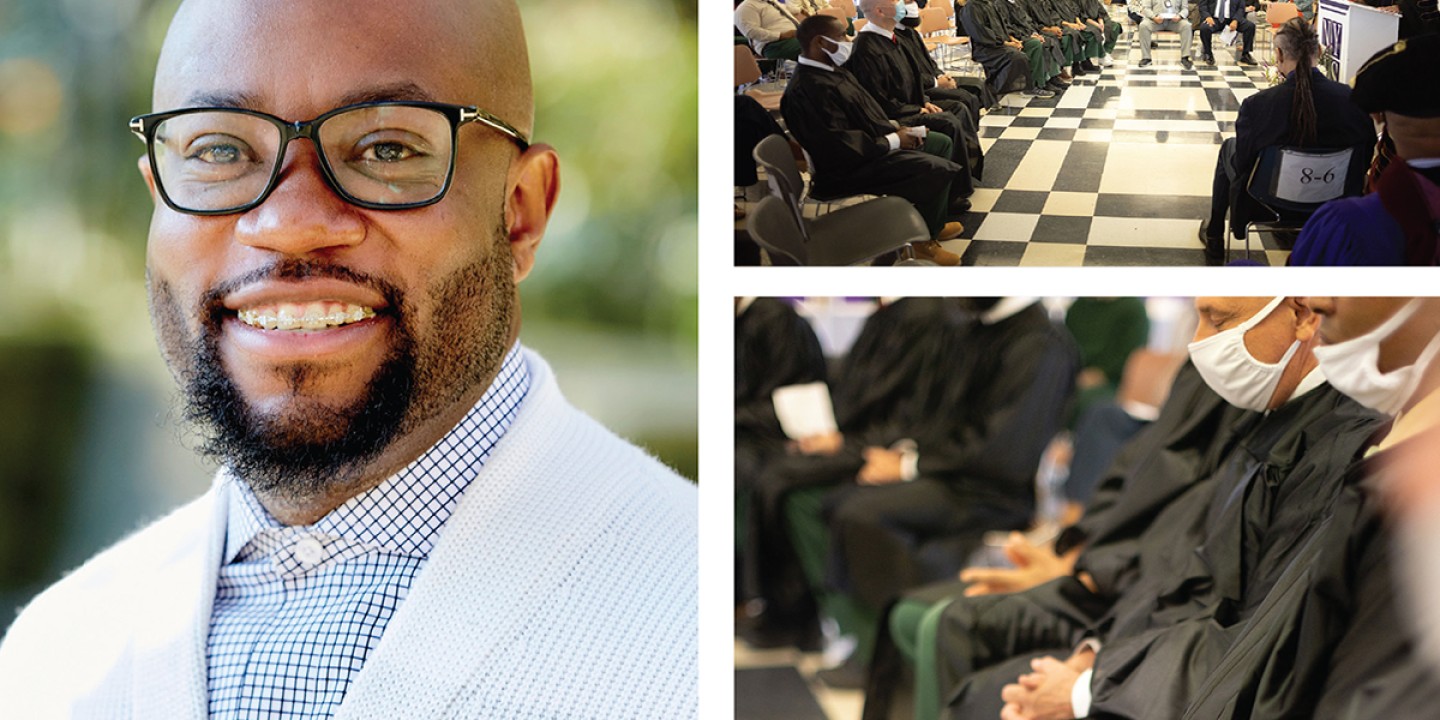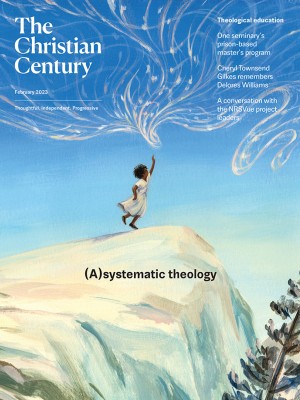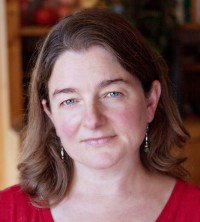Theology in carceral context
“What does it mean,” asks Willie Francois, “to cultivate leaders who are building power inside prison?”

Willie Dwayne Francois III, senior pastor of Mount Zion Baptist Church of Pleasantville, New Jersey, directs the master of professional studies program at New York Theological Seminary, which is the oldest master’s degree program offered by a theological institution in a US prison setting. The program is active in two New York State prisons: Sing Sing men’s prison and, as of last year, Bedford Hills women’s prison.
How did you become interested in the intersection of theological education and the incarceration system?
I have had profound discontentment with the way that American faith communities have been curiously silent about the carceral tribulation that exists in America. As a nation, we are only 5 percent of the world’s population, but we house 25 percent of the world’s incarcerated. There’s no other industrialized nation that has the record of hyper incarceration that the United States does.
Read our latest issue or browse back issues.
I have more than a few cousins, male cousins particularly, who have been incarcerated, and our families and churches were really silent about what was happening to them. We used code language, like they were in the Bahamas, or they were in college, when the reality was that they are Black men who are under state control for nonviolent drug offenses. It is that silence of the church and the shame that families, particularly my family, carried that drove me into thinking about this work as a part of my own vocation, disrupting how I understand myself to be a disciple of Jesus.
Tell us more about the program. What kind of classes do you teach? How do students get involved?
Our program was founded in 1982 by Bill Webber, the former president of New York Theological Seminary. Across the 40 years, we’ve graduated more than 520 incarcerated men. About three-fourths of them have gone home to do anti-incarceration work in some way. Now we have expanded the program to a women’s facility.
We center our curriculum around justice, leadership, theological methods, and reflection. It’s a 36-credit-hour program, structured across two semesters and a January term. The process ends with a 40-page master’s thesis, a capstone project that looks at some area of incarceration and some pragmatic dimension of ministry.
What kind of preparation do students have before they enter the program?
They’re from the small pool of incarcerated people who have bachelor’s degrees. The majority of them have earned these degrees while incarcerated. But they have no prior formal theological education—they come in really cold. That first semester is a time of deconstruction and critical interpretation, because some enter the program thinking that it’s intended to strengthen their faith or give them a greater conversance around what it means to be a disciple. And I love that theological education does contribute to spiritual formation of the student! But we’re interested primarily in what it means to cultivate leaders who are building power inside prison through theological and religious means.
How do you decide what to teach?
The majority of our students do not go into a formalized ministry setting once they graduate. In prison, they serve as chaplain’s assistants and in peer spiritual guidance work with other incarcerated men. They go on to do social work, to work in city agencies connected to incarceration or reentry, to create nonprofits at the intersection of faith and anti-incarceration.
Obviously we’re a seminary, so theological education is what we do, but how are we able to connect this to something related to organizational leadership and social justice? To critique of the time we live in? To dismantling the hyper incarceration of America? Developing a curriculum that speaks to our students’ vocational trajectories in justice work was really important.
It is also profoundly important to us to have faculty who are connected to this work. Two of our faculty members at Sing Sing are alums of the program, formerly incarcerated men. One now leads a coalition against mass incarceration in the New York area. The other also does work around fundraising and community mobilization connected to the formerly incarcerated.
Who do your students read who particularly resonates with this work?
Liberation theologies generate a significant point of enthusiasm for our students. This may be a bias of the syllabi, but James Cone has been really central for unlocking carceral hermeneutics in our students. They read Cone—alongside Delores Williams and Kelly Brown Douglas—and make some very creative and compelling appropriations of his work to their carceral context.
One that has failed, and it surprised me, was Michel Foucault. In one of my courses I assigned Discipline and Punish, which gives a historical reading of the development of the modern prison as a tool of social control and proliferating what Foucault calls delinquency. It didn’t go over well. Maybe it was the denseness of the reading and the short amount of time we had to unpack it, or maybe their lived experience didn’t quite track with the development of prisons in Europe, which is distinct from how Americans have developed prisons as extensions and reincarnations of plantations. But Foucault didn’t land as well as I thought it would.
What are your students searching for when they come into the program?
I think they are in search of the human dignity that is being snatched and embezzled from them on a daily basis.
I’ve heard our students talk about our program as a mountaintop, an oasis in a wilderness, a safety raft in a torturous sea. These metaphors and images lead me to believe that they’re coming to this work not just for an education. They appreciate the education, and they do a stellar job of engaging the course material, but they’re in search of ways to reclaim their power and reassert their dignity.
The biggest thing I think they’re after is an answer to this question: What does it mean for me to accept my humanity and embrace the fact that no one deserves what we’re experiencing?
Offering a degree is the least of what we’re doing. I hope we’re helping to build new levels of solidarity and shape peer mentors within the incarceration context. I also believe that our program is preparing and equipping faith and thought leaders who will be on the front lines of ending mass incarceration.
What about you? How have you changed as you’ve done this work?
Most of my work in abolition has been as an activist and as a pastor, so doing this work as a pedagogue has challenged me to consider just how detached some of my activism has been from incarcerated communities. I’ve done work with formerly incarcerated brothers and sisters, I’ve done work with the families of incarcerated brothers and sisters, but there was a serious gap as far as the work I was able to do alongside people currently under correctional control.
Being with incarcerated men these last two years, and now with women, has really expanded my pastoral imagination. What does it mean to show up as a pastor in the classroom? As a policy advocate? These questions are a direct result of my weekly engagement with men who are living under intense and unspeakable forms of humiliation and violence on a daily basis. They come to class after being assaulted by a corrections officer, and then they read Bishop Tutu’s The Book of Forgiving.
That adds a very different dynamic to the learning context. It has exposed to me some of those gaps in my understanding of what actually goes on behind bars. That in turn influences the kinds of demands that I have to put on the state to make sure that if we’re going to have prisons—and I’m not sure that we should—then they need to be humane.
Seeing, hearing, and holding those stories of dehumanization, humiliation, and violence have been really conversional and prophetic for me.
You mentioned that your students often bring a sense that their education is going to offer faith development for them. How do you address that intersection of faith development, ministry development, and academic development all at once?
Some of our faculty members may be much better at it than I am. I attempt to keep the conversation focused on critical interpretation and diverse methodologies of theological inquiry. There are those moments when the students bring more confessional readings of scripture or Christianity to the classroom. That occasions opportunities for us to interrogate where those ideas came from. So the most that I get to do in terms of faith formation is to raise questions that set the table for them to interrogate the origins of the theological convictions that they bring.
I am attempting to move my students from what James Duke and Howard Stone call an embedded sense of theology to a deliberative sense of theology, one in which they are thinking about their own theological convictions. They’re thinking about their own faith formation from the posture of question. They no longer hold any idea so sacred that it cannot be questioned.
Our program offers this critical emancipatory education, this crash introduction to the various dimensions of theological education, but I’m also hoping that students leave with tools for interrogating the origins of their theological convictions. I hope this will allow them to read their own context as incarcerated persons, their own stories on what got them to prison—both structurally and individually—and what the future outside of prison can be like.
What do you think are the most damaging or distressing theological ideas that students bring to the classroom?
I think for our male students, the embedded patriarchy of American Christianity is trafficked into the classroom with their faith commitments. I think this is true for many seminarians, not just incarcerated seminarians, but it takes an enormous amount of time to dismantle patriarchal language around God and around what it means to be human. That patriarchy and misogyny gets in the way of theological formation sometimes, though it also presents an opportunity for us to drill down and deconstruct.
Also problematic—and I think so many Christian communities need to do more interrogation of this—are ideas around sacrificial atonement and the valorizing and venerating of suffering. This idea that Jesus dies for all of us—that one person has to suffer so that the rest of us can be free—is sometimes read into my students’ own contexts. They believe that there is something salvific about their suffering. They assume that they deserve the kind of dehumanizing treatment that they receive in prison and that it gets them closer to Jesus.
This sort of theological reading does a disservice to my students’ spirits, to the faith tradition of Jesus, and to our democracy that is too dependent on the violence of prisons—which creates mass suffering for unprotected, marginalized communities of poor and nonwhite people.
You’ve just started the program at the women’s prison. How are you finding teaching women different from teaching men?
I count the expansion of this program to Bedford Hills the most significant contribution of my tenure at NYTS and my work in prison abolition to date. Our sisters are bringing different questions than I have heard from our brothers. For instance, while some of our men are parents, this is not centered in their inquiry and theological curiosity as much as what I’ve heard in the women’s facility. So there’s that dimension: the experiential questions brought into the classroom as a result of gender, questions we can’t just ignore.
Another dimension is that our teaching at Bedford Hills is 100 percent led by people who identify as women, 85 percent of them non-White. That was an intentional move to make sure that feminism and womanism were centered, not just in the books assigned but in the pedagogy. The students who identify as men often underscore the daily physical and discursive violence they experience from correction officers and other incarcerated men. However, both cohorts of learners speak to humanity-stripping experiences of prison as loci of theological interpretation and imagination.
What happens when students leave the prison and return to their home communities?
As our brothers come home with master’s degrees, more credentialed than the majority of the American population, with stellar records of work and skill development during their tenure of incarceration, they face what so many other formerly incarcerated people face: limited access to employment, discrimination in employment, and the threat of housing inequity. Many of them face housing insecurity and food insecurity. Many of them still experience barriers to obtaining a driver’s license. They still carry the imposed stigma of incarceration. Our society continues to penalize them.
But our graduates have done extraordinarily well despite that opposition and friction. They’ve created successful,
multimillion-dollar nonprofits, like Julio Medina and the Exodus Transitional Community. They run regional organizations like Ending Mass Incarceration with John Ducksworth. They work for the Children’s Defense Fund. They work in city governments. That is because of their resilience, not because of America’s open arms of welcome to them.
How is the program received by the prison administration and staff?
In terms of the corrections administration, for 40 years we have received full-throated support. That does not mean that they have always treated our students and graduates with the kind of humane respect that they deserve, but they have supported and augmented this program in surprising ways. From the commissioner to the superintendent of the prisons, they pour a lot of energy into making sure that our program runs smoothly from year to year, that our students are transferred from other facilities across the state, and that our faculty members are able to get in and out with some level of ease.
But that is not always the case with rank-and-file corrections officers. Some of them have said to me things like, “If committing a crime is what will get you a free education, I don’t know why I’m spending all this money to send my children to school.” There is a level of opposition and maybe even resentment that I have found.
But I understand that some of this resistance is connected to the fact that they are also doing time; they aren’t free, either. They are living under the same kind of suspicion from the state that incarcerated women and men live under. Their jobs are miserable. Listening to their conversations, none of them sound happy about them. So I think that their resistance to the program stems from that liminal space that they live in, of being empowered and disempowered at the same time.
You said earlier that you are not sure there should be prisons. Tell me what you imagine for an un-incarcerated world.
I would love for us to cease using our prisons as solutions for poverty, for a growing mental health crisis, for our failed public education systems—as the catchall for handling the problems we don’t have enough imagination to handle.
An alternative to incarceration is actually investing in not just the social safety net but the flourishing of people. This means ensuring that everybody who wants a job has a sustainable, paying job. It means ensuring that our schools are places of sanctuary for learning and creativity and eating and play, not places that look like prison preparatory academies.
I think that ending prisons means building institutions that are sustainable and that make human flourishing possible. This means thinking about income protections and expansion, about how we invest in education in antiracist and equitable ways, and about actually having a mental health–care infrastructure that provides services to anybody who needs them. Those are some of the ways that I think we can make prisons obsolete.
If we need places of isolation or excommunication from society, then these should be places where people go as punishment, not for punishment. Removal from society should be the extent of punishment. You shouldn’t be forced into lockdown, forced to experience violence from the people who are paid to protect you, forced to experience hunger with no way to get your basic human needs met. Yes, there are some people who should not be in the public square because they pose a risk to others or to themselves. But getting those people out of society for the most heinous of offenses should be a matter of excommunication from society, not of further punishment beyond that.
And if we need places where we pull people out of the flow of society, then those should be humane places where people still have a sense of agency, where their humanity is centered, where their dignity is not challenged, where their mental and physical health is seen as a priority.
No one should be in prison for nonviolent, low-level drug offenses. The majority of people who are incarcerated for drug offenses are actually people who are dealing with addictions. These are substance dependencies. These are people who should be under medical care, not languishing in boxes, not languishing behind bars where their humanity is being corroded and squelched. I dream of a world in which we actually have institutions that don’t just meet basic needs but set people up to flourish, to live sustainable and productive lives.






